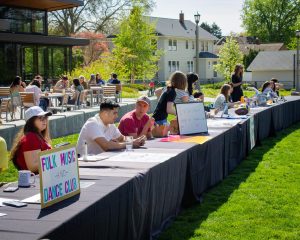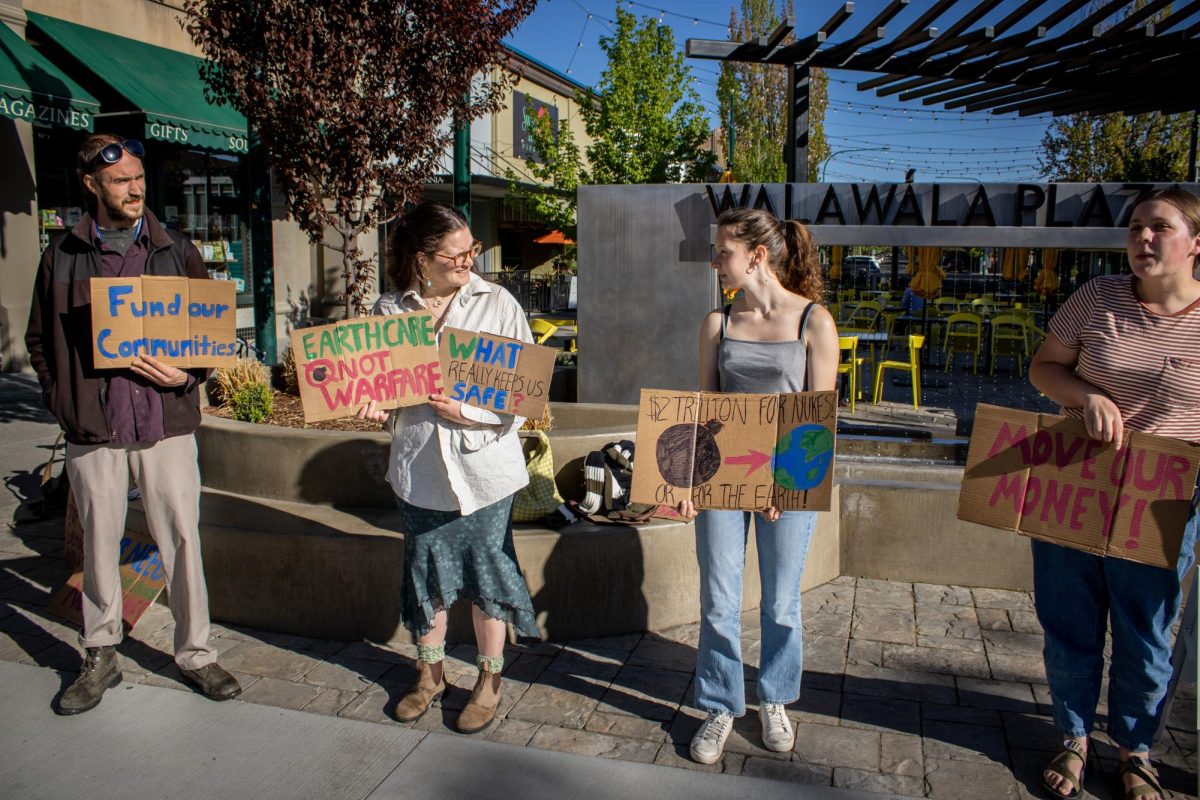Compared to the dense forests embellishing the west coast, the foliage of Walla Walla leaves much to be desired. Regardless of the surrounding areas, the landscapers on staff at Whitman are determined to maintain its aesthetic appeal as a green oasis amidst the plains of eastern Washington.
“It’s more challenging to keep the grass clean,” said Grounds Supervisor Gary Brown. “It’s a high plains dessert and our rainfall is 13 to 16 inches a year. Most of the things you see here can’t survive on that.”
The rich soil that facilitates the flourishing of nearby vineyards does enable the healthy growth of many plants on campus.
“We don’t fertilize, for instance. We don’t need to,” said Brown. “We have good soil, so we mulch our grass clippings and they feed the grass.”
The landscapers’ willingness to cooperate with Whitman’s geographic context has created an outstanding park-like setting. Not only is it unique within Walla Walla, but its appearance exceeds that of many other college campuses.
The Whitman campus is “more intricate,” according to Brown. Other campuses have “a lot of lawn, a lot of athletic complexes, a lot of concrete. Not a whole lot of the trees and shrubs that you see around [Whitman].”
The grounds staff of seven, including Brown, is composed of knowledgeable experts, such as an arborist and irrigation specialist. Due to the age of the campus, their job focuses primarily on maintenance of the grounds as opposed to creating new landscapes.
“Initial landscaping is an investment they’ve already put in,” said Brown. “Any of the new buildings normally get a more intricate landscape that is an addition to our workload.”
Whitman is determined to keep the maintenance costs down while abiding by eco-friendly policies, a goal the landscape crew works hard to achieve. The unique irrigation system, which was constructed beneath the science building, cuts the water bills drastically while recycling mass amounts of water.
“Over at the science building we have a deep well that pumps water into a huge holding tank in the basement of the building,” said Brown. “The water is used to feed heat exchangers, then travels through a covert to feed the fountain, then goes into the basement of Sherwood where a cooling coil pumps water through Memorial. What is left goes into a tank and we’ve got irrigation pumps in the tank that feed the sprinkler system.”
The multi-purpose water saves a lot of money in the long run, since 300 gallons per minute is used by the heating and cooling system. Two hundred gallons per minute is used for the sprinkler system, so the remaining 100 to 150 gallons per minute winds up in College Creek. Brown explained that the water is perfectly clean and does no environmental damage.
The sprinklers are pumped each Monday, Wednesday and Friday for 24 hours, which allows the entire campus to be covered. Since the water is free, the power to operate the pump is a minimal cost, considering the functions each gallon of water performs on campus.
“There are some areas that are off-campus: like the health center, for instance: that use city water,” said Brown.
According to Brown, the efforts to maintain Whitman’s beautiful landscape considers the
environmental implications of wasting water and saves substantial funding with such a minimal landscaping budget.







